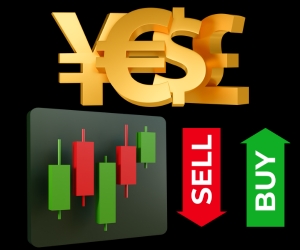WHAT ARE CONVERTIBLE BONDS?
Convertible bonds are hybrid instruments that start as debt but give the holder the option to convert them into a predetermined number of shares of the issuing company. This structure combines the downside protection of bonds with the upside potential of stocks. Typically issued by growing companies, convertibles are attractive to investors seeking income with the potential for capital appreciation. In this guide, we explain how they function, the factors that determine their value, and how they can strategically enhance a portfolio's performance.

Understanding Convertible Bonds and How They Work
Convertible bonds are corporate bonds that include an embedded option allowing the holder to convert the debt into a fixed amount of common shares, usually at a pre-set price (conversion price). Until the point of conversion, the bond pays interest like any fixed-income instrument and has a maturity date when the principal is returned.
This hybrid nature makes them attractive, as they combine the security of fixed income with the growth potential of equity. If the issuer's stock price exceeds the conversion price, the investor can convert and benefit from the upside. If not, the bond continues to pay interest and returns the principal, offering downside protection.
Key Characteristics of Convertible Bonds
Convertible bonds typically include the following elements:
Conversion Ratio – Determines how many shares are received per bond.
Conversion Price – Stock price at which conversion becomes profitable.
Coupon – Fixed interest payments until conversion or maturity.
Call Option – The issuer can redeem the bond early if the stock rises significantly.
Dilution Risk – If many bonds are converted, existing shareholders may see their ownership stake reduced.
Issuers use convertibles to raise capital at a lower cost than traditional bonds, as the conversion option adds value. For investors, they are especially useful in volatile or bullish markets, where the embedded option can enhance total return.
The most common issuers are technology, biotechnology, and high-growth companies seeking flexible, equity-friendly financing without immediate dilution. The convertible bond market is active globally, with strong participation from hedge funds, institutional managers, and hybrid strategies.
What Determines the Value of Convertible Bonds
The value of a convertible bond is influenced by both fixed income and equity factors. It has two main components: the pure bond value (based on interest and credit risk) and the value of the conversion option (based on the price and volatility of the underlying stock).
As the stock price approaches or exceeds the conversion price, the equity component gains prominence. When the stock is well below the conversion price, the bond behaves like traditional debt.
Main Valuation Factors
Various elements impact the price of convertible bonds:
Stock Price – Directly affects the conversion value and upside potential.
Volatility – Higher volatility increases the value of the embedded option.
Interest Rates – Increases can lower the bond price but raise the stock price, balancing the impact.
Credit Quality – Weaker issuers require higher coupons, affecting bond value.
Time to Maturity – Influences the time value of the option and future interest flows.
Convertible bonds are often valued using models similar to those for stock options, such as Black-Scholes or binomial, combined with fixed income criteria. These models help assess “parity” (value if converted) and “premium” (difference between current price and parity).
As intermediate assets between debt and equity, convertibles can offer downside protection and capture gains in stock market rallies. Their asymmetric profile makes them popular in uncertain or transitional markets.
Strategic Use of Convertible Bonds in Your Portfolio
Convertible bonds can bring significant value to a diversified portfolio, offering income, downside protection, and upside equity exposure. Their hybrid profile is ideal for investors seeking a balance between growth and safety, especially in volatile or late-cycle environments.
Access can be achieved through individual purchases, mutual funds, ETFs, or institutional mandates. Some strategies focus on "balanced" convertibles—with intermediate value between debt and equity—while others seek convertibles with greater equity sensitivity.
Strategic Functions in the Portfolio
Convertible bonds can fulfill several key objectives:
Capital Appreciation – Allow capturing of gains without full equity exposure.
Performance Enhancement – Offer higher total returns than traditional bonds in bullish markets.
Downside Protection – The bond component acts as a floor in bear markets.
Volatility Exploitation – The embedded option allows benefiting from volatility.
Tax Efficiency – In some countries, conversion may have tax benefits.
That said, convertibles have complexities. Call risk, dilution, and valuation need to be considered. Active management can help mitigate these risks by selecting well-structured issues and adjusting exposure over time.
In summary, convertible bonds offer a unique combination of growth and defense. For those seeking flexible exposure to stock market gains with fixed income protection, they can be a dynamic component in building modern portfolios.








